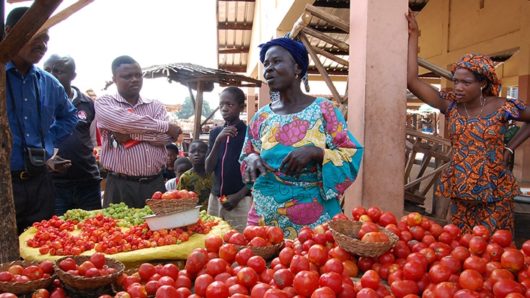10 Important Facts About Life Expectancy in Benin

Benin is a small country located in the tropical regions of Western Africa. Having established its independence from its former colonial power France in 1960, Benin remains one of the most impoverished counties in the world. Poverty coupled with several other factors has greatly affected the people of Benin in many harmful ways — here are ten facts about life expectancy in Benin.
10 Facts About Life Expectancy in Benin
- The average woman in Benin has a life expectancy of 62.4, and the average man has a life expectancy of 59.7, giving Benin an overall average life expectancy of 61.1. With this average life expectancy, Benin ranks number 163 in the world in terms of life expectancy. The country’s life expectancy has seen a consistently steady increase over the last several decades. Since the end of colonialism in the early 1960s, the country’s average lifespan has gone from 40 years in the 1950s to 61 years in 2019.
- Benin’s population is disproportionately affected by several diseases commonly known as “a disease of poverty.” Some of these diseases include malaria (9 percent of all deaths), lower respiratory infections (13 percent of all deaths) and diarrheal diseases (5 percent of all deaths). While many diseases still take a toll on the Benin population, certain tropical diseases that have in the past caused a high number of deaths, such as yellow fever and meningitis, have been either completely erased or greatly reduced, largely as a result of immunization programs in urban areas.
- The population of Benin has a very young average age. Persons under the age of 25 accounts for 63 percent of the population. This is common in developing countries since people who possess less wealth tend to have more children on average. Younger generations are expected to live significantly longer than previous generations as the results of steady progress in healthcare and social support systems within the country.
- Just like many African countries, there are a limited number of physicians in Benin. Benin only has a 0.15 physicians per 1000 people. While this is relatively high compared to other African countries Niger or Liberia, this ratio still lags well behind most of the Western world.
- It is estimated that one percent of adults in Benin, or 67,000 people, have HIV/AIDS. About 2,161 of people with HIV in Benin die every year of the disease (2 percent of all deaths each year), making it the thirteenth most common cause of death in Benin. While HIV is certainly a problem in Benin, its prevalence has been on the decline in recent decades. One study conducted in the 2000s saw a steady decline of the disease both in and around Cotonou; this decline is largely the result of integrated HIV intervention programs designed for sex workers (a population disproportionately affected by the disease). The effectiveness of these programs has led to implementation in other cities in Benin.
- Benin has one of the highest infant mortality rates in the world. Currently, the infant mortality rate in Benin is 52.8 deaths per 1000 births. This places Benin at number 23 in the world ranking of infant mortality rates.
- About 4.6 percent of Benin’s GDP is allocated to healthcare. This percentage is significantly lower than most other countries, as Benin ranked 154th in the global ranking of total GDP spent on health expenditure.
- Benin has predominantly relied on agriculture as its primary food security, both currently and historically. Several factors including poor soil and lack of modern agricultural technology have hindered agricultural progress in the country and significantly lowered the country’s food security. In fact, one-third of the country’s population lacks food security. The toll of malnutrition has always most impacted Benin’s youth, with 45 percent of children under five affected by chronic malnutrition.
- There are large discrepancies related to healthcare access and culture between urban and rural areas within Benin. Rural areas lack the social service infrastructures (such as hospitals and pharmacies) present in urban areas. People in urban areas also benefit from immunization campaigns that provide free vaccinations, and maternity clinics that provide free immunizations for newborn infants. This lack of access to basic healthcare services in rural areas has lead to a higher rate of premature death amongst the rural population in comparison to the urban population.
- In recent years, the government of Benin has made several attempts to address the health problems that are leading to a shortened lifespan in its population. The government of Benin has worked with foreign aid organizations to improve the social support systems and overall health of Benin’s population. One recent effort was done with the World Bank which provided Benin with $50 million to support programs related to early childhood development and nutrition.
Continued Progress and Increased Longevity
Over the past several decades Benin has made significant progress in extending the longevity of its population. The expansion of healthcare systems and programs in Benin’s urban areas have extended the average lifespan of the average person in Benin a full 37 years since the colonial era.
These 10 facts about life expectancy display a fair amount of progress in Benin’s longevity efforts, but there is still work to be done. The nation must complement such improvement with development in the overall health and living conditions, as well as work on the disparities between the rural and urban regions of the country.
– Randall Costa
Photo: World Bank
